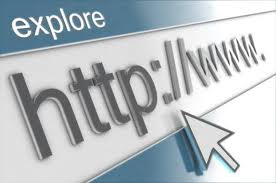Website
 Your website needs to be a smooth extension of wherever your prospects
come from to maintain the behavior and recognition of (say) Twitter on the
landing page, as described later. The reason is simply that your
website is under your control: other media allow a web presence subject to
specific rules that may not offer you the creative control that is required.
Once the prospect is directed to the appropriate landing page you know what
prospecting campaign delivered those results.
Your website needs to be a smooth extension of wherever your prospects
come from to maintain the behavior and recognition of (say) Twitter on the
landing page, as described later. The reason is simply that your
website is under your control: other media allow a web presence subject to
specific rules that may not offer you the creative control that is required.
Once the prospect is directed to the appropriate landing page you know what
prospecting campaign delivered those results.
It is important for people surfing the website to know when they transition from one environment into another. You need to maintain certain aspects that you carry forward to the source – a customized Facebook page that offers the option to transition to your business website, for example – so that there is recognition of how one links to another. Once visitors click through to your website, they will be in for a different set of rules to navigate your website as opposed to the media source.
If you keep that in mind you can turn the website into a virtual marketing canvass where you can host everything to maximize the appeal of what you want to sell. So long as the visitors can navigate back to the landing page, and from there to the social media that they left life is good. This is easy to do by having the landing page invoke your website in a separate browser window. What that means is that your website is effectively run as a stand-alone session: on closing that session the dialog is instantly back at the point of origin – literally a two-step process for the site visitor to return to the social media dialog that sparked the site visit in the first place. We can help you to accomplish that.
E-mail Opt-In Provisions
In order to stop SPAM from becoming a major problem mass mailers are required to get prospects to opt-in to accept mail from those sources. That does not put E-mail out of contention for marketing: it simply means that we can only market to “subscribers” that must have an easy way to stop the flow of E-mail. Many E-mail providers, like Hotmail, incorporate SPAM filters to block content they regard as suspicious, which can restrict a legitimate message from getting through. As a precaution we normally ask people that want to be notified by E-mail to mark our E-mail address as safe: so long as you use that address for all your outgoing mail you reduce the risk of getting caught in SPAM filters.
Part of the deal is that you promise to remove individuals from your mailing list if asked to do so. Just as with Twitter, people may no longer want to follow you, and you should comply – there is little chance to convert these “prospects” to customers so that there is no real downside to doing this.
Another part of the deal is that you should keep your E-mails plain and short with a link to your landing page for more information. Many people now check E-mail on phones, and the last thing they want is to navigate a big visual to find out what the mail is about. A short message with headlines and proper identification of your company will do the trick as people will probably wait to be in a proper location where they can navigate the complete information with the least chance of disruptions.
Landing Pages
The assumption is that your website will be the first place you establish advertising that lasts. A good strategy is that what you publish should last, because other websites may establish links that can bring their traffic to your website. The only time we pull content is if it has become obsolete or if it is invalidated: you can do one better by replacing the content with information that explains why it has become obsolete or is invalidated.
The structure of your website will evolve from basic landing pages (where people parachute into the site based on a specific URL – Universal Resource Locator) that introduce your business and/or specific products and/or services much like this Write4hire.com site. It is the intent to entice visitors to then start browsing a site by clicking on links, or buttons, that open threads of information that they wish to pursue. The strategy commonly used is no different from a magazine that lists the headlines and/or a brief paragraph with page references to find more details about that subject in the identified part of the magazine.
A landing page may be referenced as a Tweet link where followers are made aware of a special offer. The way to keep that intact is that the page stays static, but the contents that describes the offer is replaced to guide the followers to the appropriate segment of your website based on what the offer is about. The other media, then, are used to lead people to your website so that you do not have to re-publish and take out expensive advertising: this is the usual premise for a website business case. Landing pages can help you track what media a prospect came from if you use a unique page per source.
Navigation
Landing pages are naturally tied to access points when customers visit the website, but when you create special campaigns the links between different media contacts and your standard website need to adapt to the nature of a special offer, for example. A website can, therefore, have many landing pages to bridge continuity between a Facebook page and your website depending on the theme you carry forward. Once you have prospects landed on your website you can then provide navigation options related to advertising.
If you create a landing page for a sales event, you can summarize the information relevant to the event and link out to details like brochures or other information from that landing page. You can also place links into the regular website navigation. This way the website itself remains static while you can get to all promotional information as if it was organized in that structure naturally, but with special website navigations driven by that landing page.
Landing pages may be time-limited. If so, you may remove the links, and add “expired” to the page. You should still re-publish expired landing pages: other sites may link to the special offer – while you should still allow navigation into the regular site (independent of any special offers) you will not honor the special deals that were part of the offer. In some cases businesses recycle special deals, and there is nothing to stop you from using an “expired” landing page, removing the “expired” notification, and republishing that same page for your current special offer. Review the different social media descriptions to better understand why we would go through the effort to establish landing pages.
Product Labels
It is becoming more common for products to carry a URL that takes the customer to the manufacturer’s website on a page dedicated to that product (-line) or brand, such as in http://www.company.com/product, that then delivers the prospect right on the landing page for that specific product where you can announce specials, coupons, or other types of promotional information. The product packaging becomes part of the media drawing traffic to your website, but in a way does not drop the consumer in the middle of your website to fend for themselves.
It is quite easy to establish a product landing page to measure the effectiveness of using a specific landing page for each product, and to create campaigns around the product, not only for advertising, but also to have a ready-made vehicle for announcements that affect the product, such as recalls. You can emphasize your quality consciousness with a page that includes a section on recalls even if to suggest there are none in effect. You can provide information on how to read the “best before” label, if applicable, and list ways to enjoy the product (with a link to a brochure, if appropriate).
While you support product-specific navigation you also facilitate a click-through into the mainstream company website so consumers can browse what other products you have in your line. The point of this page is to spark ideas for how to connect the website to a customer base: the nature of the product will dictate the specifics of how you can build that landing page for a specific purpose.


